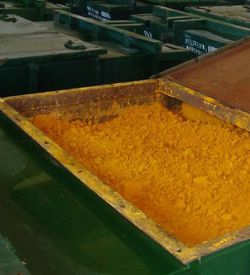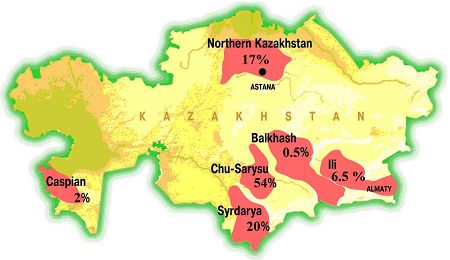UxC, LLC (UxC) is pleased to announce a 2012 special report on Kazakhstan's nuclear industry. This comprehensive report analyzes the current status and future prospect of the country's nuclear industry in light of the Fukushima accident in Japan.
 The dramatic increase in Kazakh uranium production over the past decade was one of the most significant developments in the history of uranium production. Not only the country managed to quadruple its production in a decade's time, but it also accounted for the vast majority of the overall net increase in world uranium production.
The dramatic increase in Kazakh uranium production over the past decade was one of the most significant developments in the history of uranium production. Not only the country managed to quadruple its production in a decade's time, but it also accounted for the vast majority of the overall net increase in world uranium production.
There is no doubt that this growth in Kazakh production has had a significant impact on the market. Given recent changes in the nuclear power markets in the aftermath of the Fukushima accidents, this raises critical questions related to Kazakh plans in the front-end of the nuclear fuel cycle, including:
- What is Kazatomprom's strategic market approach in the post-Fukushima environment?
- What are the various factors that will determine the level of Kazakh production, both internal and external to the country?
- Can Kazakhstan sustain the rate of production it hopes to achieve?
Comprehensive Analysis
In addition to addressing the questions above, this new report provides a detailed analysis of all aspects of Kazakhstan's fuel cycle and nuclear power development initiatives, while also analyzing these developments within a broader context. Naturally, special attention is provided to reviewing the many government and market factors influencing the world's largest uranium producing country and prospects for the expansion of future uranium mining in the coming decades.
Uranium Resource & Project Analysis

The report details the nature and extent of Kazakhstan's resource base with an expressed emphasis on the country's deposits, economics, and the multiple foreign joint ventures held by Kazatomprom.
Uranium Production: Past and Future
Expansion of uranium production in Kazakhstan, which became known as the "Kazakh phenomenon," has had a tremendous impact on the uranium market in the last decade. Long gone are doubts that the ambitious goals set out by Kazatomprom could not be met. In 2011, Kazakhstan's uranium production continued to grow by 11%, with total production reaching 19,450 tU, just shy of the 20,000 tU milestone.
This section of the report examines Kazakhstan's historical uranium production and factors influencing the country's uranium production. Kazakhstan's future production plans and long-term sustainability are also examined. Finally, the report takes a look at various aspects of Kazatomprom's marketing strategy.
Nuclear Fuel Cycle Program
Another key strategic decision by Kazatomprom has been to leverage its uranium resource position to enter other phases of the nuclear fuel cycle (conversion, enrichment, and fuel fabrication). Kazatomprom has made progress in these areas through acquisitions and joint ventures, and seems intent on following this path despite the setbacks and delays that these proposed JVs have encountered. This section of the report carries out a detailed analysis of the entire Kazakh nuclear fuel cycle program.

